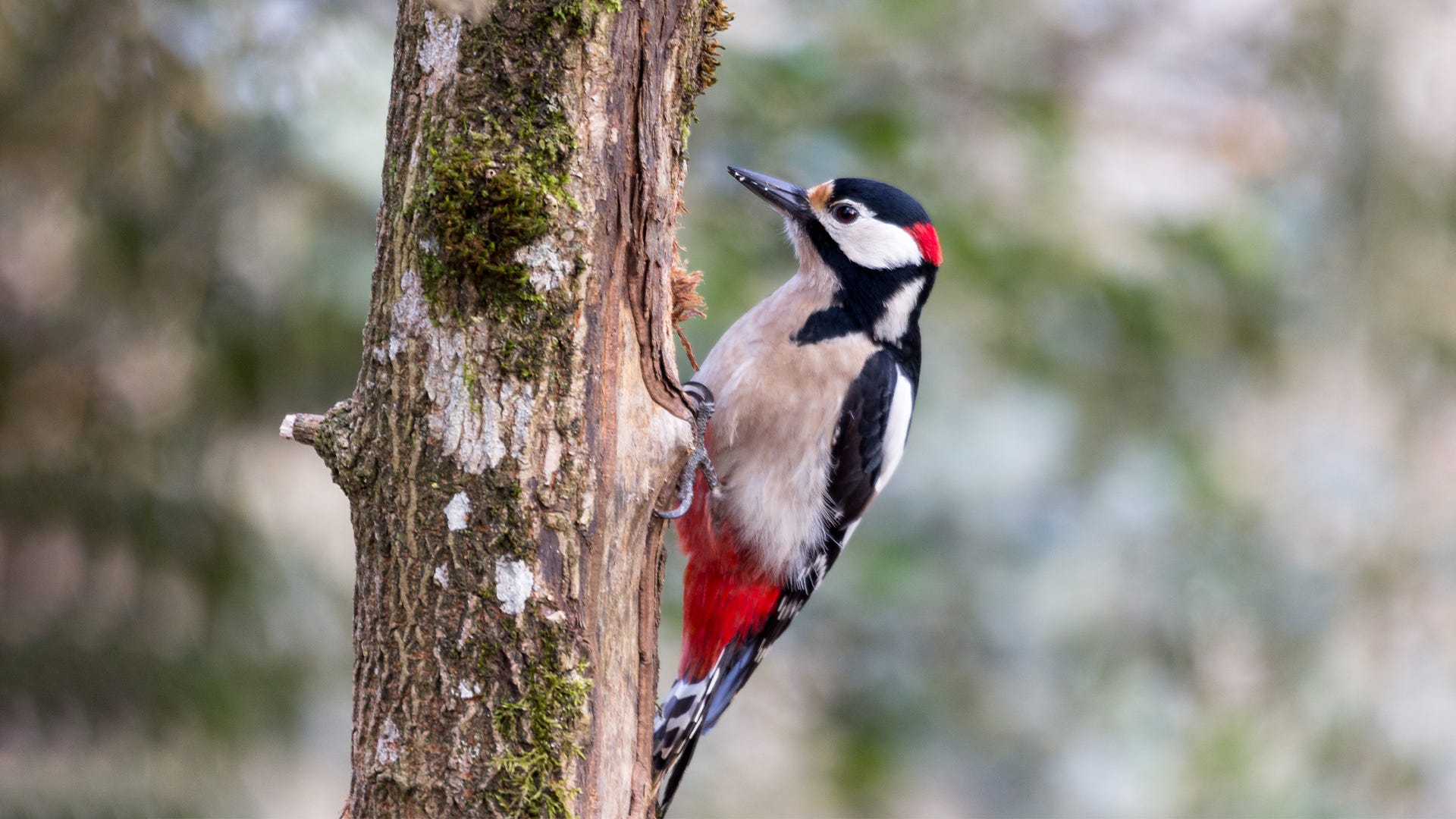Running Into Woodpeckers in Florida Types: Environments and Actions
Running Into Woodpeckers in Florida Types: Environments and Actions
Blog Article
Discover the Remarkable Globe of Woodpeckers: Every Little Thing You Required to Know
The world of woodpeckers is a world loaded with special behaviors, intricate adaptations, and a diverse variety of species. From their habitats and circulation patterns to their feeding behaviors and specialized anatomical features, woodpeckers have long astounded the interest of ornithologists and nature enthusiasts alike. Understanding the ins and outs of these remarkable birds provides a look into the intricate interaction between their biology and the environment. As we discover the globe of woodpeckers better, we uncover a wide range of details that loses light on their relevance in ecosystems and the obstacles they deal with in an ever-changing world.
Woodpecker Habitats and Circulation
Woodpeckers live in a varied array of settings worldwide, showcasing flexibility in their distribution patterns. These durable birds are discovered in woodlands, forests, savannas, and deserts across numerous continents, demonstrating their capability to grow in different weather conditions. In The United States and copyright, as an example, woodpeckers can be spotted in both coniferous and deciduous woodlands, utilizing their strong beaks to forage for insects and develop nesting cavities in trees. In Africa, particular woodpecker varieties have actually adjusted to arid atmospheres, such as the acacia woodlands, where they play an important function in controlling insect populations.

Feeding Behaviors and Diet
Among the different facets of their actions, woodpeckers exhibit distinct feeding habits and nutritional preferences. These birds are primarily insectivores, with a diet regimen that consists of ants, beetles, caterpillars, and various other insects located in trees. Woodpeckers use their solid beaks to drill into the bark of trees, penetrating for bugs and larvae hidden underneath the surface area. In enhancement to insects, woodpeckers also take in nuts, seeds, fruits, and sap. Some types have actually specialized tongues with barbed suggestions that aid them extract insects from crevices in timber.
Woodpeckers are understood for their drumming behavior, which offers not just to interact with various other woodpeckers however likewise to find food. The fast drumming audio is created by the bird pecking on resonant surfaces like dead trees or metal posts. This behavior can draw in insects hidden in the wood, enabling the woodpecker to identify their visibility and feed on them.
One-of-a-kind Adaptations for Tree Climbing
In their experienced search of bugs hidden within tree bark, woodpeckers have progressed remarkable anatomical attributes that outfit them with distinct adaptations for reliable tree climbing. Among the essential adjustments is their zygodactyl feet, with 2 toes directing forward and two aiming in reverse, providing a solid hold on tree trunks. This specialized foot plan enables woodpeckers to hold on to upright surfaces effortlessly, allowing them to relocate up and down trees with agility. Additionally, woodpeckers have tight tail plumes that serve as a supportive prop while her latest blog they climb, helping in equilibrium and security. Their solid, chisel-like beaks are not just used for boring into timber however additionally for gripping onto bark as they ascend tree trunks. Woodpeckers have strong neck muscles and a special head structure that take in the effect of continuous pecking, allowing them to climb up up and down Get More Information without creating damage to their brains. These adaptations display the amazing transformative layout that allows woodpeckers to browse trees with precision and efficiency.
Diverse Woodpecker Types Worldwide
With over 200 various types spread throughout numerous habitats worldwide, the family of Picidae encompasses a remarkable variety of woodpeckers. These birds can be discovered in forests, forests, savannas, and even metropolitan areas, showcasing their flexibility to various environments. From the iconic Northern Flicker in North America to the vivid and evasive Crimson-backed Flameback in Asia, each woodpecker varieties exhibits distinct features in regards to quill, habits, and habitat choice.
Woodpeckers differ significantly in size, with the diminutive Downy Woodpecker gauging around 6-7 inches in size, while the powerful Lineated Woodpecker can get to up to 17 inches - Woodpeckers in Florida. Their beaks additionally are available in various shapes and sizes, showing their feeding routines. Some varieties specialize in extracting insects from tree bark, like the Acorn Woodpecker, while others, such as the Black-cheeked Woodpecker, feed upon fruits and seeds

Conservation Efforts and Difficulties
Preservation efforts for woodpecker populations are essential in minimizing the influence of environment loss and various other hazards facing these varied bird types. Woodpeckers deal with different difficulties to their survival, primarily due to logging, urbanization, climate adjustment, and intrusive varieties. To resolve recommended you read these concerns, preservation efforts focus on safeguarding and bring back woodpecker habitats, carrying out sustainable forestry practices, and elevating awareness regarding the relevance of these birds in communities.
One significant difficulty in woodpecker conservation is the fragmentation of their environments, causing isolated populaces that are more susceptible to extinction - Woodpeckers in Florida. Conservationists work to produce wild animals hallways and safeguarded locations that link these fragmented habitats, enabling woodpeckers to move between various areas for feeding, breeding, and shelter

Verdict
In verdict, woodpeckers are fascinating birds with one-of-a-kind adaptations for tree climbing and feeding habits. Additional research and conservation activities are needed to guarantee the survival of woodpeckers in the wild.
Report this page